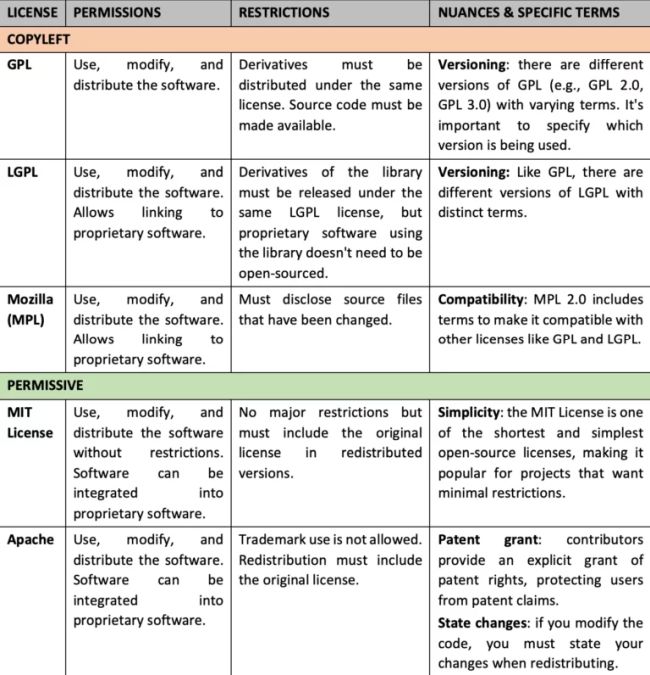Within the world of open-source software, every line of code comes with its own set of rules. Whether you're an innovative start-up crafting the next big app or a seasoned enterprise integrating third-party solutions, understanding the nuances of open-source licenses is paramount. This article will help you understand the most popular licenses, their implications, and the practicalities that businesses often overlook.
WHAT IS OPEN SOURCE
Open-Source Software (OSS) refers to software whose source code is made available to the public. This allows anyone to view, modify, and distribute the software. The open nature of OSS encourages collaborative development: anyone can inspect, understand, and validate the software's functionality, adapt the software to their specific needs, fix bugs, improve performance or add new features.
Open-source licenses are legal agreements that state how OSS can be used, modified, and distributed. Open-source licenses grant users the right to use, modify, and distribute the software. However, the exact permissions can vary based on the license. While open-source licenses grant many freedoms, they also come with restrictions to protect the software's open nature and the rights of contributors.
- Copyleft licenses (e.g. GPL) require that any modifications or derivatives of the software also be released under the same open-source license. This ensures that the software remains open.
- Permissive licenses (e.g. MIT) allow users to modify and distribute the software with fewer restrictions, even permitting integration into proprietary software.
OVERVIEW OF KEY LICENSES
For an overview of key licenses, see below:

PRACTICAL RECOMMENDATIONS
- Understand the terms and implications of the chosen license: this might include obligations like releasing derivative works under the same license (as with GPL) or providing attribution. Read the license attached to the OSS you are planning to use.
- Ensure license compatibility when integrating multiple components: not all open-source licenses are compatible. For instance, a project under GPL cannot include code under a non-GPL compatible license. This can pose challenges for businesses integrating multiple open-source components.
- Consider dual licensing: some projects offer dual licensing (as with GPL or LGPL). This means they are available under two different licenses, typically one open source and one commercial. This approach allows businesses to choose the license that best suits their needs. For instance, a company might use the open-source version for testing and switch to a commercial license for distribution, benefiting from additional features or support.
- Consider the long-term impact, including potential costs and security concerns: businesses must ensure that the open-source components they use are secure and regularly updated.
HOW CAN LOGAN & PARTNERS HELP?
Remember, while open source offers numerous benefits, it's essential to navigate its legal landscape carefully. Consulting with legal experts familiar with open-source licensing can provide clarity and ensure compliance.
We invite you to book a free 20-minute consultation with our software lawyers to clarify your questions and ensure your projects thrive in a collaborative and compliant environment.
The content of this article is intended to provide a general guide to the subject matter. Specialist advice should be sought about your specific circumstances.

